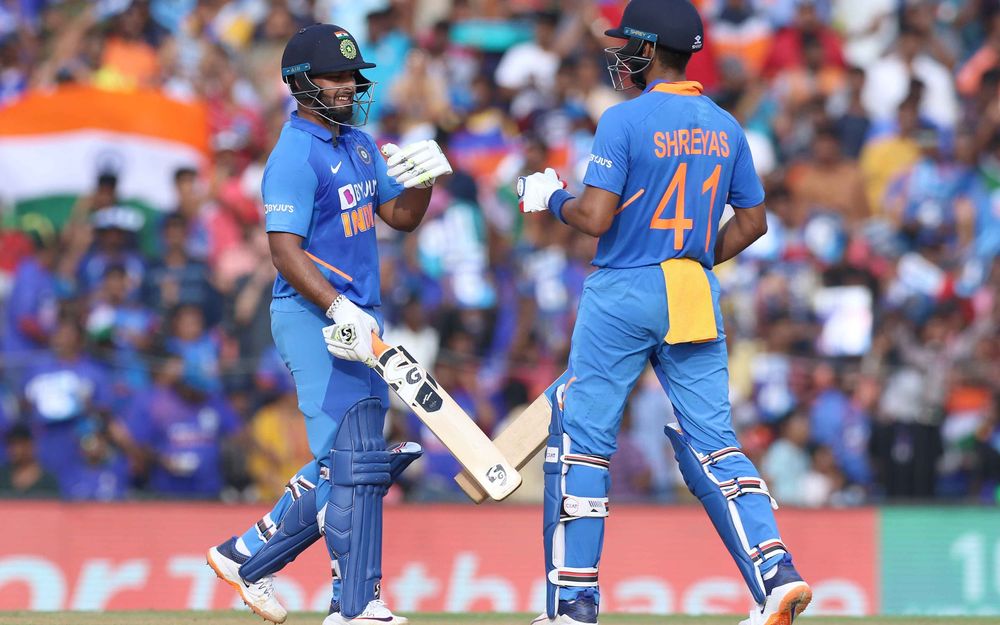IND vs WI | Takeaways - The Iyer-Pant restraint and India’s faulty “four-bowler” approach
On a completely two-paced wicket, India huffed and puffed their way through but Shimron Hetmyer made Indian bowling unit look like a joke to ensure an easy win for the visitors. While the game was a celebration of Iyer and Pant’s discipline, India made to rue their four-player theory.

Restraint and discipline - a foundation that is must on a slow pitch
It is always tricky to bat on a surface like Chepauk; the two-paced nature would sometimes bore you to death and for a batsman, it was the ultimate question of survival. However, if the contrast in banality is how we would remember great partnerships by, this, let me tell you, by Shreyas Iyer and Rishabh Pant was one of the best in recent memory. With the ball stopping and shooting at inconsistent frequencies, the duo bid time through solid restraint and discipline to ensure that India reached a fine total of 287 runs.
It was, in simple words, understanding the pitch better than anyone else. When Rohit played a pull shot in the powerplay and failed to execute due to the lack of natural bounce, he must have understood patience was the key here. The Delhi Capitals duo played to their own strength, with enough respect for the bowlers, and followed a similar style to bring about their half-centuries, which in extension, served the purpose for India.
Pant’s working areas were square either side of the pitch and he stayed inside the line and went hard whenever there's any width on offer. Bowling short into his body or outside of it wasn’t a good ploy and Pant cashed in on that. He was so effortless that typical restraint innings like today’s yielded runs at over 100 S/R. Iyer, meanwhile, bid his time initially and looked to rotate strike. His front-foot play negotiated Sheldon Cottrell threat and spinners failed to attack his back-foot line, ensuring Iyer finding enough down-time to settle down. The key at the heart of both the innings was restraint, as it should have been on a wicket like Chennai, and that is especially why the innings would have made the Indian team management the happiest.
Did Windies miss a trick in middle overs
For a moment today, Sheldon Cottrell reminded me of Ifran Pathan of 2004. Every time Pathan was bringing India the control in the powerplay with parsimonious bowling display, and Rahul Dravid used to push him to the death over in the hope of the same impact. Nevermind, it wouldn’t happen and Pathan ended up having an average figure next to his name. Everything about Kieron Pollard’s tactics reminded me of Dravid today, with Cottrell, known for his death over heroics, rendered ineffective.
In the first five overs that Cottrell bowled today, inside the first powerplay, he gave away only 12 runs, with his left-arm swing creating problems for KL Rahul and Virat Kohli. The angle that he created was not only down to his round-arm action but also because of the slowness of the surface that stopped the balls on its path. The trajectory it created became his rhythm too and he seemed well-set to continue for another over, for the fact that Windies had the trio of Hayden Walsh, Keemo Paul and Alzarri Joseph to bowl in middle and death. By asking Cottrell to stop and not bringing him back until 33rd over meant the pressure was back on the Windies.
One might say I am reading too much into it that Pollard might have been planning to keep Cottrell for the death and finishing off Joseph and Paul in the middle overs, but that was devoid of any logic. Pant and Iyer were cruising along and a spell by Cottrell, who was by far the most successful bowler today, would have really had an impact. It eventually destroyed his bowling figure too as India accumulated a total of 28 runs of him in the last spell to put a spanner in the Jamaican’s works.
Two sixes don’t make a five - Can India realise it now
When Bhuvneshwar Kumar was ruled out for the ODI series, BCCI added Shardul Thakur to the line-up, bolstering the bowling strength a bit. However, on a Chennai track, with wickets being undercover for more than two days, India went ahead with two spinners and two pacers, alongside two more part-timers. Both Shivam Dube and Kedar Jadhav are no more than holding bowlers and can be considered as nothing but sixth bowlers. Call it overconfidence or thinking to extend the batting order, India seriously messed it up. And it doesn’t require hindsight to have an understanding of the same.
Dube, in particular, has been a complete unproven customer, with his only claim to fame in India colours being that three wickets against Bangladesh in Nagpur. While he has earned his spot in the Indian side with his penchant for big hits, he faltered massively in the bowling department, contributing heavily in the Indian loss. Jadhav, in fact, bowled only one over, going for 11 runs in the process.
It is where the problem lies. When Jasprit Bumrah and Bhuvneshwar Kumar gave India control and simultaneously picked wickets upfront, India had the cushion of an in-form Kuldeep-Chahal pair. The duo packed in tandem, and India never really felt the need of having a proper fifth bowler. Devoid of that luxury, the team had to make a conscious decision but the one they took was anything but illustrious. A pair of sixth bowlers can never be equal to a fifth bowler and ever since, Hardik Pandya is out of the Indian team, the lesson has been laid bare out in the open. But who cares about that?

Comments
Sign up or log in to your account to leave comments and reactions
0 Comments